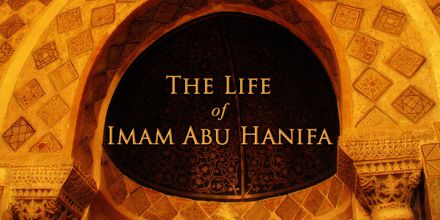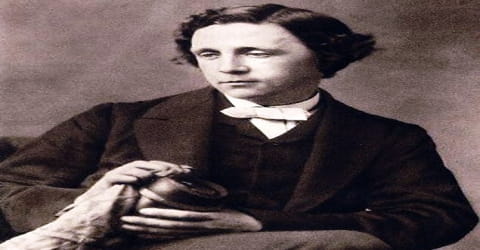Abu Hanifa: Imam e Azam
Born: September 5, 702 (80 Hijri); Kufa, Umayyad Caliphate
Died: June 14, 772 (aged 69) (150 Hijri); Baghdad, Abbasid Caliphate
Era: Islamic golden age
Jurisprudence: Sunnah
Main interest(s): Jurisprudence
Notable idea(s): Istihsan
Notable work(s) Kitabul-Athar; Fiqh al-Akbar etc.
Imam Abu Hanifa was the first to compile and classify the Fiqh science, he collected information for each branch of knowledge. He wrote the books Fara’id and Shurut (Obligations and Conditions). There are a lot of books describing his wide knowledge on fiqh, and his amazing superiority in piety, God consciousness, mildness and righteousness.
Imam Abu Hanifa was a descendant of a Persian notable, he was born in Kufa in 80 (698 A.D.). He learned Fiqh with the help of Hammad ibn Abi Sulaiman. He enjoyed the companionship of many notables of the Tabiin, and of Imam Jafar as-Sadiq. He memorized innumerable Hadiths. He was brought up so as to become a great judge, but he became an imam Al-madhhab. He had a superior, and amazingly keen intellect. In Al fiqh, he attained an unequalled grade in a short time. He then became very popular all over the world.
Imam Abu Hanifa joined his father’s business, where he showed scrupulous honesty and fairness. His agent in another country once sold some silk cloth on his behalf but forgot to point out a slight defect to the customers. When Abu Hanifa learnt of this, he was greatly distressed because he had no means of returning the money to the customers. So he immediately ordered the entire proceeds of the sale of the consignment of silk to be distributed to the poor.
Notable Works:
- Fiqh al-Akbar
- Fiqh al-Abasat
- Kitaab-ul-Aathaar narrated by Imaam Muhammad al-Shaybani – compiled from a total of 70,000 hadith
- Kitabul Aathaar narrated by Imaam Abu Yusuf
- Aalim wa’l-muta‘allim
- Musnad Imaam ul A’zam
- Kitaabul Rad alal Qaadiriyah
Name, birth and ancestry
Imām Abū Ḥanīfah was born in the city of Kufa in Iraq, during the reign of the powerful Umayyad caliph Abd al-Malik ibn Marwan. His father, Thabit bin Zuta, a trader from Kabul, Afghanistan, was 40 years old at the time of Abū Ḥanīfah’s birth.
His ancestry is generally accepted as being of non-Arab origin as suggested by the etymology of the names of his grandfather (Zuta) and great-grandfather (Mah). The historian, Al-Khatib al-Baghdadi, records a statement from Imām Abū Ḥanīfah’s grandson, Ismail bin Hammad, who gave Abū Ḥanīfah’s lineage as Thabit bin Numan bin Marzban and claiming to be of Persian origin.
Imām Abū Ḥanifa was born 67 years after the death of Muhammad, but during the time of the Sahaba of Muhammad, some of whom lived on until Abū Ḥanīfah’s youth. Anas bin Malik, Muhammad’s personal attendant, died in 93 AH and another companion, Abul Tufail Amir bin Wathilah, died in 100 AH, when Abū Ḥanīfah was 20 years old.
However the author of al-Khairat al-Hisan collected information from books of biographies and cited the names of the Sahaba whom it is reported that the Imam has transmitted hadith from. He counted them as sixteen of the Sahaba. They are: Anas ibn Malik, Abdullah ibn Anis al-Juhani, Abdullah ibn al-Harith ibn Juz’ al-Zabidi, Jabir ibn Abdullah, Abdullah ibn Abi Awfa, Wa’ila ibn al-Asqa`, Ma`qal ibn Yasar, Abu Tufail `Amir ibn Wa’ila, `A’isha bint Hajrad, Sahl ibn Sa`d, al-Tha’ib ibn Khallad ibn Suwaid, al-Tha’ib ibn Yazid ibn Sa`id, Abdullah ibn Samra, Mahmud ibn al-Rabi`, Abdullah ibn Ja`far, and Abu Umama.
Adulthood and death
The story of Imam Abu Haneefa is the story of the famed city of Baghdad. With the Abbasid Revolution of 750 CE, the center of gravity of political power shifted from the Arab heartland to Persia and Central Asia. Acknowledging this shift in power, the Caliph al Mansur wished to relocate his capital from Damascus, Syria. Iraq, sandwiched between Persia and the Arab world was the logical choice. Imam Abu Haneefa was commissioned by the Caliph to locate and plan a site for the new capital. Abu Haneefa chose the current location, around a bend of the River Tigris, paying careful attention to defense and communications. To obtain the concurrence of the Caliph, Abu Haneefa marked out the geometrical layout of the planned capital, showing in detail the location of the palace, the mosque, the market place, the residential areas and the fort. Then he sprinkled cotton seeds over the marked outlines. Selecting a moonless night when there was little background radiation, Imam Abu Haneefa set fire to the cotton seeds. One of the characteristics of cotton seeds is that they radiate a brilliant light when they are ignited. Using the ignited cotton seeds as his guide, Imam Abu Haneefa showed the outline of the planned city to the Caliph from a tower specially constructed for observation on the occasion. The Caliph was pleased and authorized the construction to begin.
A large number of bricks were needed for the construction of the city. Factories went up all around the selected site but there was no quality control, of either weight or size. Imam Abu Haneefa prescribed that each brick must meet specific requirements of dimensions and weight. In addition, he stipulated that the bricks, once delivered, be stacked in cubical piles of prescribed dimensions so that the total number of bricks in each pile was one thousand. In this manner, he introduced the concepts of specific density and specific volume and applied them in a major architectural project.
Abu Haneefa, born as he was into a merchant family, learned the silk trade from his grandfather. His early training was in commerce rather than in Sunnah and Fiqh. It is related that when he was eight years old and was on his way to his grandfather’s silk store, he was stopped by a Shaykh and was asked which madrasa he was headed to. The Shaykh saw the light on the face of the young Abu Haneefa and sensed his great potential. When Abu Haneefa answered that he was headed to the silk store of his grandfather and not to a madrasa, the Shaykh guided him instead to a classroom. The young Abu Haneefa made rapid progress and soon outperformed all the other students in his class, memorizing the Quran, learning hadith and Sunnah and soaking in the knowledge that the best of the Shaykhs had to offer.
The learning of the young Shaykh Abu Haneefa soon attracted the attention of students and scholars. Young and old alike attended his halqa (a circle of students) and learned from him. Traveling to the Hijaz, Abu Haneefa performed his Hajj and spent two years in Madina attending the halqa of Imam Ja’afar as Sadiq, learning from him the inner meaning of the Shari’ah as transmitted from the Prophet through ahl-e-bait. There is, however, another tradition which believes that Imam Abu Haneefa and Imam Ja’afar as Sadiq never met. However, on the basis of the well known saying of Imam Abu Haneefa, “If it were not for the two years I spent with Ja’afar as Sadiq, I would be left wandering”, we accept the premise that Imam Abu Haneefa did indeed attend the halqa of Imam Ja’afar as Sadiq and learned ilm ul ishara (the knowledge of the unseen) from him.
Imam Abu Haneefa had a unique method of teaching his students. Instead of giving them solutions to specific questions brought before him, the Imam would divide up his students into two groups. One group was asked to defend a proposition while the other was asked to oppose it. “What if” propositions were placed before the class. The students would study the Quran, the Sunnah, the hadith as well as the earlier decisions taken by the Suhaba, passionately debate among themselves, and would finally come up with a consensus. The process was devised to remove any probability of error in the judgment and the premise was that a higher truth emerges out of the dialectic (debate) of two opposing positions. A thousand years later, the same process became the foundation for the Hegelian dialectic, a school of philosophy named after the German philosopher George Wilhelm Frederich Hegel (1770-1831). Hegel is considered the father of dialectic philosophy. The Marxists as well as the German nationalists before the Second World War considered Hegel to be the father of their ideology.
Study
It is important here to elaborate on the terms Shari’ah and Fiqh as the two are sometimes used interchangeably as if they are synonymous, which they are not. Shari’ah is the unchanging, eternal Law of the Divine and applies to nature, history as well as societal issues. The fact that the sun rises from the east is Shari’ah. The fact that electromagnetic waves take more than eight minutes to reach the earth from the sun is Shari’ah. If the earth was any closer to the sun, it would be too hot. If the earth was any farther away, it would be too cold. In either case, life on this planet would be impossible. The fact that the earth is tucked in a secure niche, coupled to a star of medium size, in a secure corner of our galaxy which rotates in its own orbit is Shari’ah. The fact that individuals and nations will ultimately destroy themselves if they violate justice is Shari’ah. Prayer is Shari’ah. So are charity, fasting, zakat and hajj.
Fiqh is the historical dimension of the Shari’ah. It is the human attempt to apply the Shari’ah so that they discharge the Divine commandment to create Divine patterns on earth. It defines the how, what, who when and what ifs of the Shari’ah. The process of Fiqh is a dynamic balance between the application of Divine Mercy and Divine Wrath with justice acting as the governing principle. The Quran and the hadith explain clearly that Divine Mercy is preponderant over Divine wrath (The Quran, 11:119. Please also see the hadith, “By Him in whose Hand is my life, if you were not to commit sin, Allah would sweep you out of existence, and He would replace you by those people who would commit sin and seek forgiveness from Allah, and He would have pardoned them.“ Sahih Muslim, Volume 4, 1143, Kitab al-Tauba). The majestic panorama of creation revolves around knowledge, worship, service and forgiveness. The dimensions of Shari’ah are infinite. The dimensions of Fiqh are finite and it has definite hudood (limits).
The Hanafi Fiqh which evolved as an outgrowth of the teachings of Imam Abu Haneefa offers five sources for the development of Fiqh: the Quran, the Sunnah of the Prophet and his confirmed Ahadith, the Ijmah of the Companions, Qiyas and Estehsan. The different schools of Fiqh differ on the importance of these five sources.The Maliki school which grew up in Madina in the heart of the Islamic world, accepts the Quran, the Sunnah of the Prophet and the collective Ijmah of all the Companions as sources of Fiqh but it rejects Qiyas and Estehsan. The Shafii school requires the Ijmah of the Companions to be universal as does the Maliki Fiqh, but unlike the Maliki Fiqh, it accepts the principle of Qiyas under exceptional circumstances. The Shafii Fiqh rejects Estehsan as does the Ithna Ashari Fiqh. The Hanbali Fiqh is the strictest of them all. It accepts only the Quran, the verified Sunnah of the Prophet and the universal consensus of the Companions as sources of Fiqh.
The Sunnah schools accept the mutuality of the four major schools of Fiqh, namely, Hanafi, Maliki, Shafii and Hanbali. They differ only in their emphasis of the sources of Fiqh.
It was the genius of Imam Abu Haneefa that he left behind a legacy of jurisprudence, and the broadest principles that practically any jurist at any time and any place could use. Al Madhab al Qiyas, for instance, is the science of analogy. Qiyas literally means to measure, to place something in balance. Where a direct injunction from the Quran and the Sunnah of the Prophet is not available, the principle of Qiyas permits a jurist to use the force of analogy, to measure the preponderance of evidence and offer a legal opinion on a juridical matter. Similarly, where an entirely new situation arises which was not foreseen in earlier times, the principle of Estehsan provides a jurist the independence of Ijtihad (which means a rigorous intellectual exercise to arrive at a legal opinion).
The principles of Qiyas and Estehsan are available to the large number of Muslims who live as minorities in India, China, Europe and America to apply the Shari’ah and deduce legal opinions that meet the requirements of their social, political and economic context. For instance, in the thirteenth century, at the height of the Mongol destructions, the great scientist Nasiruddin al Tusi applied the principles of Estehsan to develop a school of akhlaq (character) called akhlaq e Nasiri. This school later became the foundation of the curriculum in the schools of Mogul India. Through his very openness, Imam Abu Haneefa left open the doors to ijtehad for minorities, doors that were shut in later times. This is his legacy. This is his greatness. No wonder he is referred to as al Imam al A’zam (the great Imam).If ever a Fiqh for minorities, al Fiqh al akhliyya (minority Fiqh) is evolved (as opposed to the existing schools of Fiqh which are al Fiqh al Aghlabiya, the Fiqh of the majority or the dominant group), the credit for its foundation must go to Imam al A’zam, Abu Haneefa.
Death
His success and his greatness made the political establishment of the times jealous of him. In 766 CE Caliph al Mansur asked Imam Abu Haneefa to be the chief Kadi (judge) of Baghdad. The Caliph had hoped that by offering him a high post he could bring the Imam under his control. But the great ulema and sages and awliyah have through the ages refused the favors of kings and noblemen to maintain their independence. Abu Haneefa declined. The Caliph, furious that his invitation was spurned, had the Imam flogged and put in jail. Even in the prison, the Imam continued to teach and train his disciples. And it was in prison that this great mujtahid breathed his last in the year 767 CE. The tribute to this giant among scholars is that a large majority of Muslims around the world, from Istanbul to Dhaka, from Samarqand to Cairo, use the Fiqh named after him. The principles of Qiyas and Estehsan evolved by Imam Abu Haneefa, when they are applied in conjunction with the Quran, the Sunnah and Ijmah, provide the intellectual tools that can be used to develop a minority Fiqh (al Fiqh al Akhliyya) which has yet to emerge in the Islamic world despite the fact that more than three hundred million Muslims live as religious minorities in India, China, Russia, South Africa, Europe, Australia and North America.
















